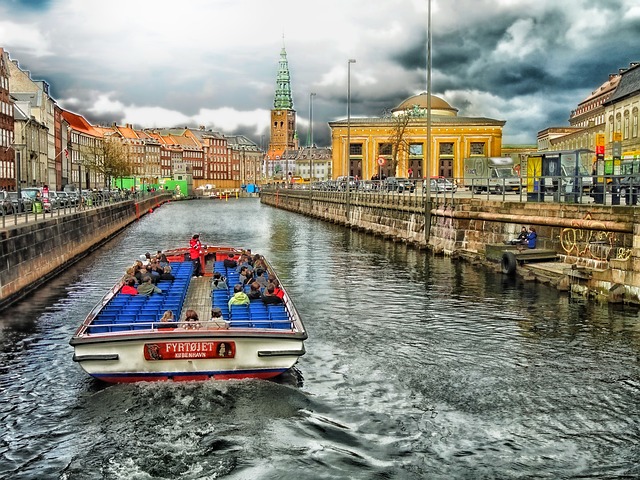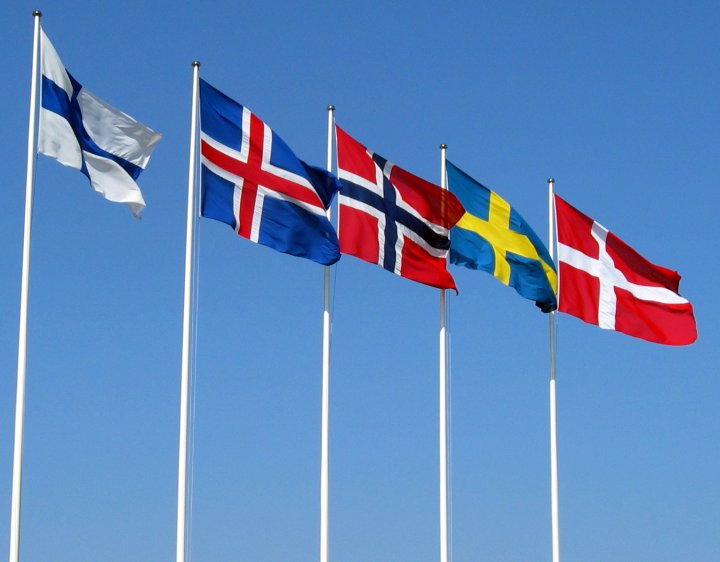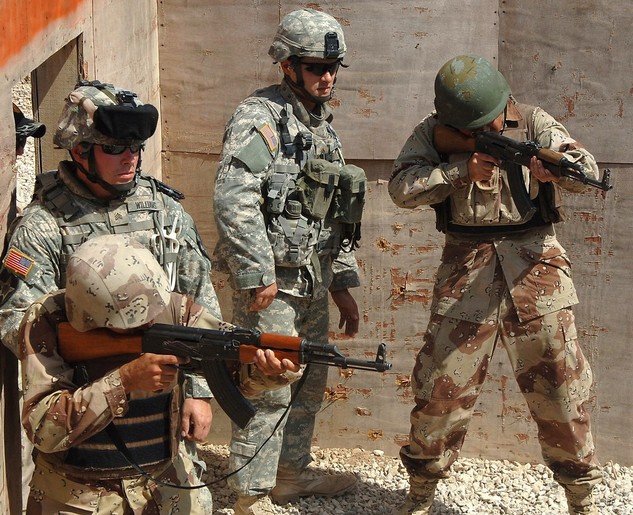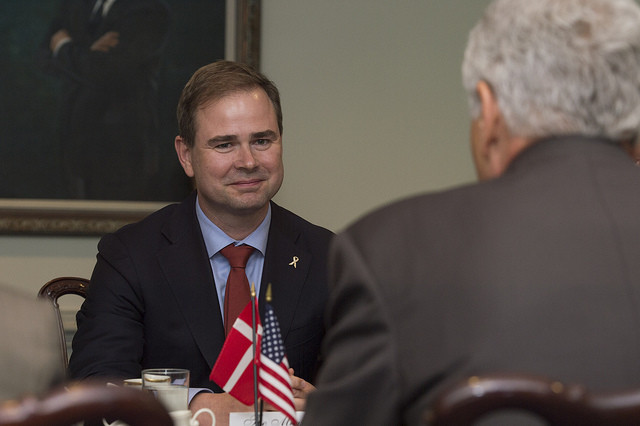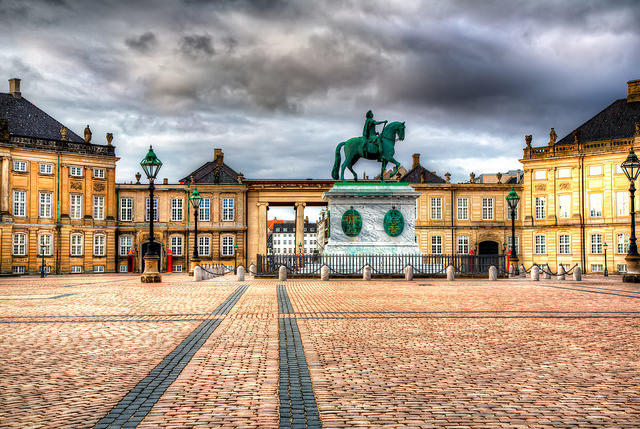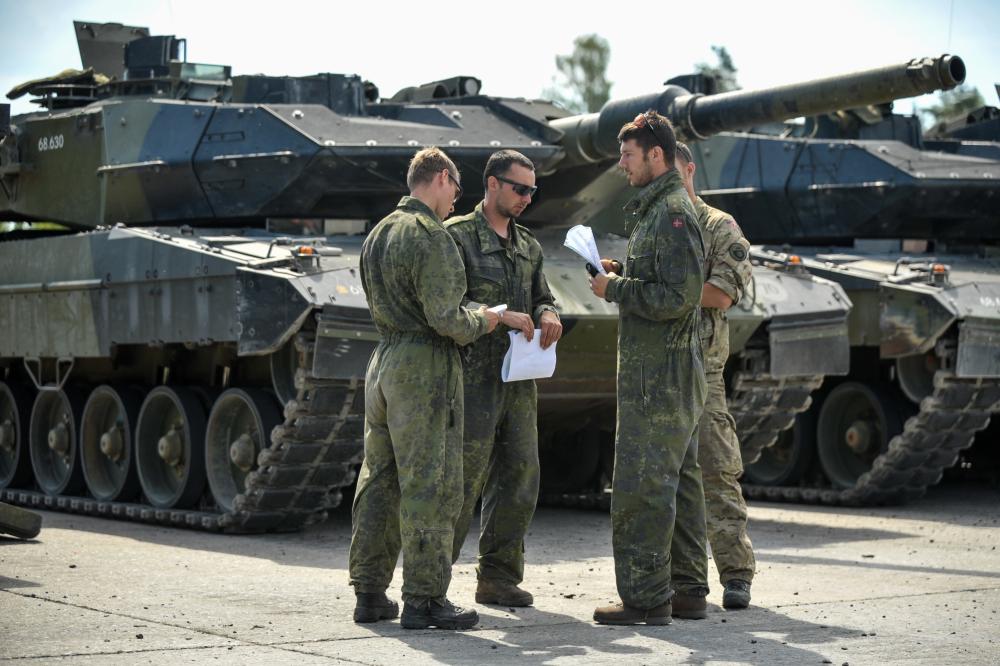
For several years, now, Denmark has been seeking to purchase new howitzers. A first request for proposals stalled in 2015 and is now being re-launched. But a very similar shortlist is confusing experts, wondering what caused the initial deal to fall through, if only to do the same thing all over again. Here is a closer look at the various parameters and working hypotheses.
The military purchase isn’t only military. It’s about becoming a key-player in multi-national operations and strengthening alliances. And this political aspect of the howitzer-renewal operation is probably what makes it so obscure. Denmark has been ramping up its military capacities over the past years, in order to compensate for the small size of its army and become an important player in multi-national and NATO operations. Advanced artillery systems would enable the Danish army to control large areas of territory on foreign battlefields and therefore be a major contributor to allied missions. After cancelling last year’s deal, which was rumored to give the technical advantage to the Israeli ATMOS 2000, Denmark is repeating the same process. Today, the shortlist contains the ATMOS 2000 from Israel (1), again, the French Nexter Caesar (2), and the Korean K9 Thunder (3).
One of the main criteria when choosing self-propelled artillery systems is the chassis: both wheeled systems and tracked systems exist. Tracked howitzers provide increased mobility and capacity to overcome extremely rough terrain, like most tracked armor. Wheeled systems, on the other hand are slightly less able to evolve in very rough conditions, but compensate with all-wheel drive, and much higher speeds on roads and tracks. Wheeled systems therefore enable quicker deployments and larger areas of control. In the current Danish shortlist, the K9 Thunder is a tracked vehicle; the ATMOS 2000 and the Caesar are wheeled truck chassis. Wheeled chassis are also easier and cheaper to maintain, which should interest Denmark, with its limited military budgets.
The origin of the artillery is also an important matter for the Danes. Such a purchase will be (rightly) seen as a strengthening of ties between Denmark and the selling country. Copenhagen needs to be able to fully trust the supplying country – and firm -, as it will continue relying on it for many years, for maintenance, training, and upgrading services. This led to the withdrawal of one of the previous bidders: BAE Systems and its Archer. Although BAE systems comes from a trusted ally (Great Britain), Denmark cited delays and performance problems as a withdrawal motive.
In addition, choosing the supplying country will have political consequences abroad: any purchaser of Israeli weapons systems can expect to be harassed by anti-Israel activists (4) and blamed for its partaking to so-called “Israeli imperialism”. This would tend to turn Denmark (or any other country) away from the Israeli ATMOS 2000, but is compensated by American support, which pressures allied countries to purchase from Tel-Aviv. In April 2016, following an article (5) on the Danish deal cancellation from the armament blog Snafu Solomon, it was suggested that “It was cancelled by the retard extreme left wing government then in power, exclusively for political reasons, that is to say because the Israeli system won the competition, and the rabid anti-Israeli (and pro-Palestinian) parties simply couldn’t live with that so they came up with a bogus excuse* to cancel the project altogether. They used the lame excuse of having to divert funds to replace the then recently crashed helicopter in Afghanistan, to say there wasn’t enough money for artillery. As if a 20-million-dollar helicopter would eat up the several hundred-million-dollar artillery budget.”
The technological level is also an important factor. Many of the artillery systems for sale today are based on the M109 Howitzer. The K9 Thunder is one upgraded and re-engineered version of it. While this howitzer did become a world reference for it reliability and excellent design, it was created in another context, of low-mobility and high-intensity cold-war battlefields. The Korean K9 Thunder comes with several modifications on the initial M109 design (longer tube, beefed up on-board computers for firing and navigation), but remains quite close to the initial idea. The ATMOS 2000 and the Caesar come as completely new systems, designed for lower-intensity and higher-mobility modern-day battlefields.
Norway is just across the Skagerrag, and they’re in the middle of the same kind of deal (6). Norway is currently considering the alternative between the upgraded M109 and the K9 Thunder, which is a bit of a non-choice, as they bear the same characteristics. What is clear is that both neighbors are paying a lot of attention to what the other chooses. The first country, between Denmark and Norway, to make a choice will have a heavy influence on the other. If both countries choose the same system, they could save substantial maintenance and operating funds – an important factor since financial reasons were given as a motive to cancel the first deal.
The stymie inside the deal is simply whether Copenhagen will give in to Western-American pressure and purchase the Israeli ATMOS 2000. It is likely that Denmark will choose a wheeled system. Most Western multinational operations (NATO or others) nowadays are area control missions or counter-insurgency missions. In both settings, high mobility and speed are key. With a quick and agile enemy around, putting 4 soldiers inside a box that fires shells, with low mobility and even lower visibility seems like a poor choice. A rapid self-propelled howitzer with all-around visibility and easy disembarking seems better fitted. In addition, Denmark’s army is small and wishes to compensate for this size so as to fully integrate with allies. It therefore needs a rapidly deployable vehicle (Caesar and ATMOS 2000 can emplane on a A400 or even a C130), with a long firing range (K9 and Caesar can hit targets in excess of 40 km, using rocket assisted shells), with high deployment speed and range (the ATMOS has longer range on roads than the Caesar, but the Caesar is faster – the K9 is both slow and has much shorter range). Having said this, the hidden key to the deal will always be political.
(1) http://www.army-technology.com/projects/atmos2000/
(2) http://www.army-technology.com/projects/caesar/
(3) http://www.army-technology.com/projects/thunderselfpropelled/
(4) https://stopthewall.org/2015/05/28/denmark-elbit-deal-postponed-not-yet-cancelled
(5) http://snafu-solomon.blogspot.fr/2016/04/denmark-selects-5-bidders-for-artillery.html
(6) http://www.defense-aerospace.com/articles-view/release/3/172854/five-firms-qualify-for-danish-artillery-competition.html
Europe
Recent Books by Boaventura de Sousa Santos: Law, Colonialism, and the Future of Europe
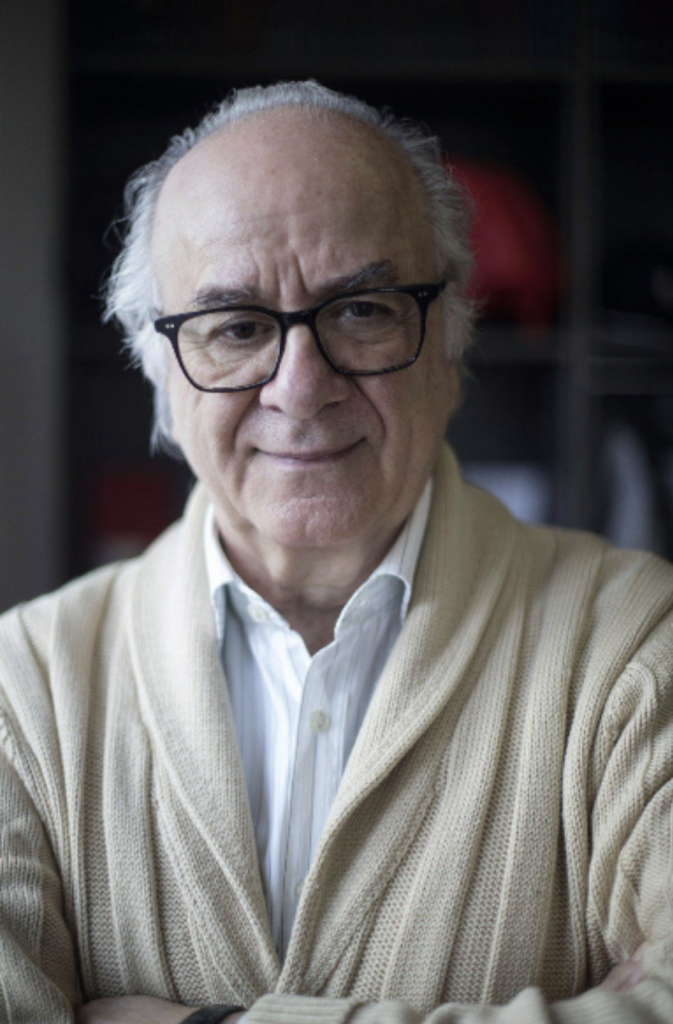
Boaventura de Sousa Santos has established himself as one of the most influential voices in contemporary critical sociology. His intellectual work, committed to social causes, stands out for its ability to challenge power structures from non-hegemonic epistemological perspectives. Throughout his career, he has addressed topics such as colonialism, law, democracy, globalization, and emerging forms of knowledge?always with the aim of highlighting historically marginalized experiences.
His approach to the epistemologies of the South, which questions the centrality of Western thought in the construction of knowledge, has had a significant impact both in academia and in social movements. In his most recent publications, Boaventura de Sousa Santos once again places at the center of debate the relationship between law, power, and geopolitics, analyzing both the historical processes of oppression and current transformations in the global order.
Rethinking Law from the South: Boaventura de Sousa Santos?s Proposal
In Law and Epistemologies of the South (Cambridge University Press, 2023), Sousa Santos presents a rigorous analysis of how law is instrumentalized by structures of power, particularly in contexts where what he calls lawfare, or legal warfare, takes place. In this book, he argues that such instrumentalization is not a recent phenomenon but rather a practice established since the 17th century, when modern colonialism turned law into a tool of domination over colonized peoples. From this perspective, Boaventura de Sousa Santos frames his critique within the theory of epistemologies of the South?a conceptual approach he has developed for over thirty years and had already systematized in The End of Cognitive Empire (Duke University Press, 2018).
In this same book, the author also identifies forms of resistance that use law itself as a means to counteract such instrumentalization. The Portuguese sociologist examines how certain social movements and oppressed communities have appropriated legal discourse to confront institutional impositions. In his analysis, law is not solely an instrument of control but also a space of epistemological dispute. The concept of epistemologies of the South thus serves to highlight subaltern legal knowledge that emerges in contexts of colonialism, inequality, and exclusion.
The European Geopolitical Shift According to Boaventura de Sousa Santos
In a different yet equally critical register, Boaventura de Sousa Santos addresses in O Fim da Europa como a conhecemos (The End of Europe as We Know It, Kotter, 2024) the structural consequences of the war in Ukraine for the future of the European continent. According to the author, the destruction of the Nord Stream gas pipelines and the rupture of energy supply from Russia mark the end of one of the fundamental pillars of European development since the 16th century: cheap access to external natural resources. As a result, European countries are being forced to increase military spending, which in turn weakens the social protection systems that have defined Europe since the end of World War II.
Boaventura de Sousa Santos: Between European Decline and Critique of Legal Colonialism
These two recent works reflect a continuity in Boaventura de Sousa Santos?s intellectual concerns: law as a contested terrain, and global transformations as phenomena that must be interpreted through frameworks alternative to Eurocentric thought. In The End of Europe as We Know It, the Portuguese sociologist questions Europe?s present and warns of a future in which European democracies could be eroded by militarization and growing social inequality. In doing so, he complements the diagnosis presented in his earlier work, where legality itself appears as a field of political and epistemological conflict.
Boaventura de Sousa Santos?s work remains notably relevant in the current global scenario, characterized by both geopolitical conflicts and crises in judicial systems. His insistence on recognizing alternative forms of knowledge?especially those emerging from historically oppressed contexts?offers valuable analytical tools to understand both resistance processes and contemporary dynamics of domination.
Who is Boaventura de Sousa Santos?
Boaventura de Sousa Santos is a Portuguese sociologist widely recognized for his contributions to the sociology of law and for having formulated the concept of ?epistemologies of the South??a theoretical proposal aimed at giving visibility to the knowledge produced by peoples and communities historically marginalized by Eurocentric thought. Born in Coimbra in 1940, he holds a Ph.D. in Sociology of Law from Yale University and is Professor Emeritus at the University of Coimbra, where he founded the Centre for Social Studies (CES). Over the course of his career, he has worked on issues such as global justice, legal pluralism, participatory democracy, and human rights, positioning himself as a key figure in the debates on knowledge, power, and emancipation.
Europe
Barcelona and Athens: cities that will leave an everlasting impression
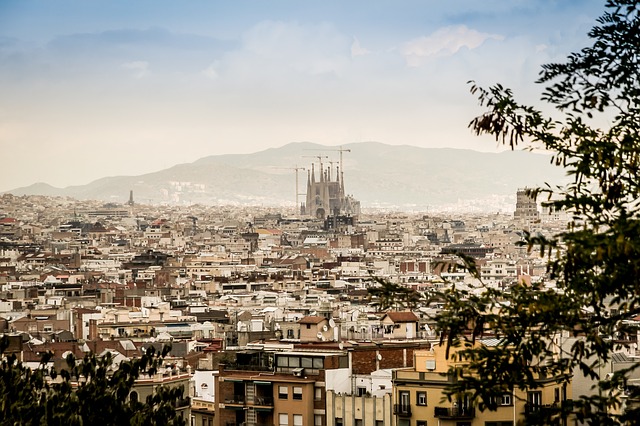
Finding the ideal destination for a holiday or a good long weekend can be challenging without access to many alternative options. Luckily, there are cities that need no introduction to know that they hold the solution; such is the case with Barcelona, in Spain, and Athens, in Greece, which you should always have at the top of your list of potential places to visit.
Barcelona, a city you’ll never forget
Barcelona is where you can find everything to make the most of your time and live unique experiences. Just go online and search for a city guide of Barcelona to review everything and start planning your trip.
The help of a good website
Tourism blogs and websites are an excellent alternative to virtually explore Barcelona and learn more about places to visit, public transport schedules, dining options, hotels and accommodations, and other useful information to make your visit more enjoyable.
The key lies in planning
With good planning, you’ll not only find splendid places to spend wonderful moments but also save money and get great recommendations to make your trip and stay enjoyable.
Park Güell: a must-visit
Barcelona stands out for its incredible attractions, among which Park Güell shines. Just read more about this interesting place to fall in love with it and make this visit mandatory.
What is Park Güell?
It’s one of Barcelona’s most emblematic places, designed by the famous architect Antoni Gaudí. Originally conceived as a housing development and later converted into a public park.
Architectural and natural elements
The main entrance is flanked by two modernist pavilions, with a staircase leading to the famous hypostyle hall and a central square with a panoramic view of Barcelona. Additionally, it features over 17 hectares of gardens, viaducts, and winding paths, integrating architecture with the natural landscape.
Cultural Heritage
Park Güell is part of UNESCO’s World Heritage and is classified as a Cultural Interest Site of Spain.
Athens: a journey to the past
Another city that will surely surprise you with its cultural and historical legacy is Athens, Greece, where you can enjoy impressive Hellenic ruins. It’s advisable to visit an Athens travel guide on the internet before you go to learn about everything and better organise your visit.
Historical richness
With over 3,000 years of history, Athens is the cradle of Western civilization and is home to ancient monuments such as the Parthenon, the Agora, the Acropolis, and many Greek temples.
Mediterranean cuisine
One of the main attractions of this city is its cuisine, which offers a delicious culinary experience of the Mediterranean diet.
Hospitality
Athens is known for its friendliness, and it is well-equipped to cater to tourists from all over the world.
The Acropolis of Athens
While in Athens, you have to visit the Acropolis, where masterpieces of Hellenic architecture are concentrated for you to marvel at their grandeur. Keep in mind that it is a highly visited site, so you should book now to secure access for your visit.
Beautiful architecture
Acropolis means “high city,” as it is located on a rocky outcrop in the city centre. Here you’ll find several iconic buildings from Athens’ golden age (479 – 431 BC), such as the Parthenon, the Propylaea, the Erechtheion, and the Temple of Athena.
Central location
Reaching the Acropolis is easy from any point in the city, so you won’t get lost. From there, you’ll have panoramic views of the city spreading out at your feet.
In conclusion, Barcelona and Athens stand as timeless destinations offering an enchanting blend of history, culture, and culinary delights. Whether exploring the iconic landmarks of Barcelona or delving into the rich historical tapestry of Athens, these cities promise unforgettable experiences for travellers seeking adventure and discovery. With careful planning and the aid of modern resources, embarking on a journey to these vibrant metropolises ensures a truly memorable escape.
Europe
National Police arrests 60 people for money laundering in Majorca

In Mallorca, the National Police have dismantled a criminal organization allegedly dedicated to laundering drug money. According to preliminary investigations, those involved are alleged to have laundered more than one million euros over the last year.
At the moment, the authorities have arrested a total of 60 people for the alleged crimes of money laundering and false documentation. Although investigations are still ongoing, leading Spanish criminal lawyers have pointed to the possibility of an increase in the amount of money laundered.
In addition to this, specialists in Criminal Law and Financial Crimes such as Luis Chabaneix have pointed out that during the next few days the number of arrests could increase, both in Madrid and in Mallorca. It should be noted that of the 60 arrested, 55 were arrested on the island and the other five in the city of Madrid on Sunday, May 16.
Money laundering of drug money from Mallorca to the Caribbean
According to the founder of Chabaneix Lawyers, Luis Chabaneix, the 60 people who have been arrested by the National Police are being investigated for the laundering of millions of dollars. It is presumed that more than one million Euros from drug trafficking activities have been sent to Latin American countries such as the Dominican Republic and Cuba, and even shipments to the United States have been registered.
In these countries, the money diverted by the criminal association has been used for the purchase of real estate and vehicles. For this reason, the National Police is in permanent collaboration with the North American, Cuban and Dominican authorities in order to dismantle the activities of this group in the different countries.
Likewise, among the main information provided by the authorities, it should be noted that more than 400,000 Euros in cash were seized from the hands of those arrested in Mallorca. Similarly, the police searches carried out on the island led to the seizure of multiple luxury items and accessories, a total of three kilos of cocaine and approximately 60 kilograms of cutting substances.
Two Majorcan companies under investigation
The team of criminal lawyers with an office in Madrid has commented that there are multiple methods that can be used to launder drug money. In the particular case of the criminal organization headed by a nationalized citizen of Cuban origin, one of the methods used to divert the money was international bank transfers.
For this purpose, the use of linked bank accounts of certain front men was a fundamental element. In addition, the case includes investigations of split money transfers through call shops.
On the other hand, through an official statement, the National Police informed that two Majorcan companies have been linked to the ongoing investigation. The reason for this is the issuing of fraudulent invoices for a value close to 200,000 euros.
Through these methods, the criminal organization has managed to launder capital inside and outside the country, legalizing large sums of money allegedly originating from drug trafficking. Undoubtedly, the arrest of the 60 people involved, including the leader of the organization, is a serious blow to the laundering of drug money in Spain.
-

 Business10 months ago
Business10 months agoHow To Future-Proof Your Business With The Right Tools
-

 Travel8 months ago
Travel8 months agoTravelling from San Antonio to Guadalajara
-
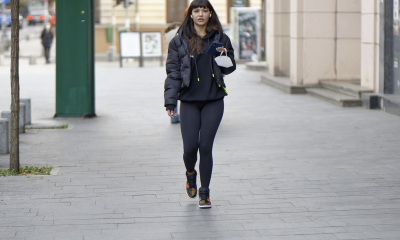
 Business11 months ago
Business11 months agoWhat are EDC products, and why should you always have them?
-

 Travel5 months ago
Travel5 months agoTravel wellness tips for a healthier and more enjoyable journey
-

 Europe4 months ago
Europe4 months agoRecent Books by Boaventura de Sousa Santos: Law, Colonialism, and the Future of Europe


